I hope somebody can help me with my problem:
- My data consists of categories that contain a number of up-regulated and down-regulated genes. I want them to show as horizontal, stacked columns. That works
- I sorted generated these gene categories with two methods (Terms), UP_Keyword and GO-Term. They yielded different numbers of gene categories. No problem with facet wrap.
# A tibble: 10 x 4
Category Term Reg Reg_val
<chr> <chr> <chr> <dbl>
1 Transport UP_Keyword Up 63
2 Transmembrane helix UP_Keyword Up 341
3 Transmembrane UP_Keyword Up 344
4 Transport UP_Keyword Down 3
5 Transmembrane helix UP_Keyword Down 12
6 Transmembrane UP_Keyword Down 9
7 translation GO_term Up 41
8 glycolytic process GO_term Up 9
9 translation GO_term Down 0
10 glycolytic process GO_term Down 1
structure(
list(
Category = c(
"Transport",
"Transmembrane helix",
"Transmembrane",
"Transport",
"Transmembrane helix",
"Transmembrane",
"translation",
"glycolytic process",
"translation",
"glycolytic process"
),
Term = c(
"UP_Keyword",
"UP_Keyword",
"UP_Keyword",
"UP_Keyword",
"UP_Keyword",
"UP_Keyword",
"GO_term",
"GO_term",
"GO_term",
"GO_term"
),
Reg = c(
"Up",
"Up",
"Up",
"Down",
"Down",
"Down",
"Up",
"Up",
"Down",
"Down"
),
Reg_val = c(63, 341, 344, 3, 12,
9, 41, 9, 0, 1)
),
row.names = c(NA,-10L),
class = c("tbl_df",
"tbl", "data.frame")
)
ex_plot <- ggplot(example_data, aes(x=Reg_val, y=Category, fill=Reg))+
geom_col(width=0.5)+
facet_wrap(.~Term, nrow=2, scales="free")
- I want the bars to be the same width in all facets. Is there a way to do that?
- I found a possible solution here:https://community.rstudio.com/t/preserve-constant-bar-widths-for-uneven-faceted-plots/26837 However, simply adding space="free" inside facet_wrap() results in no changes but a warning: unused argument (space = "free")
If someone has a solution for my problem, I would be very grateful. Please try to explain in a way a simple biologist can understand.

